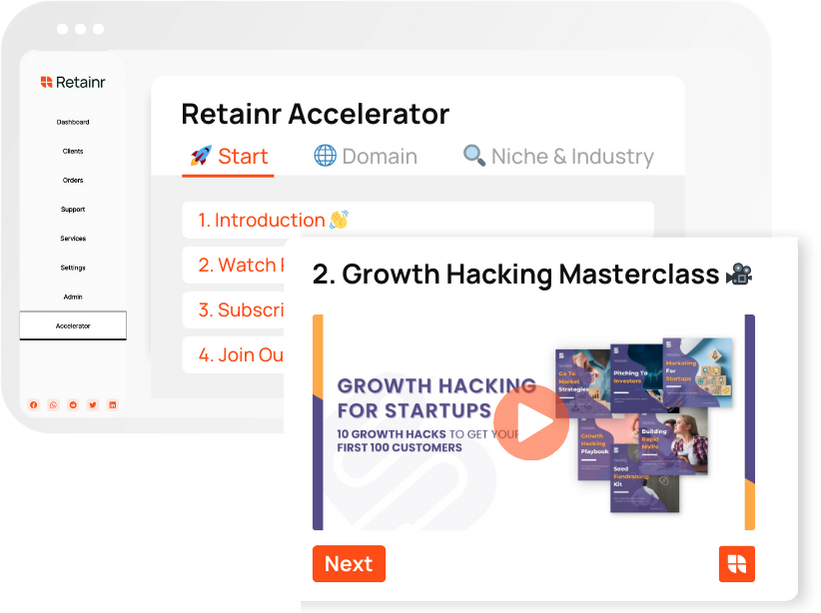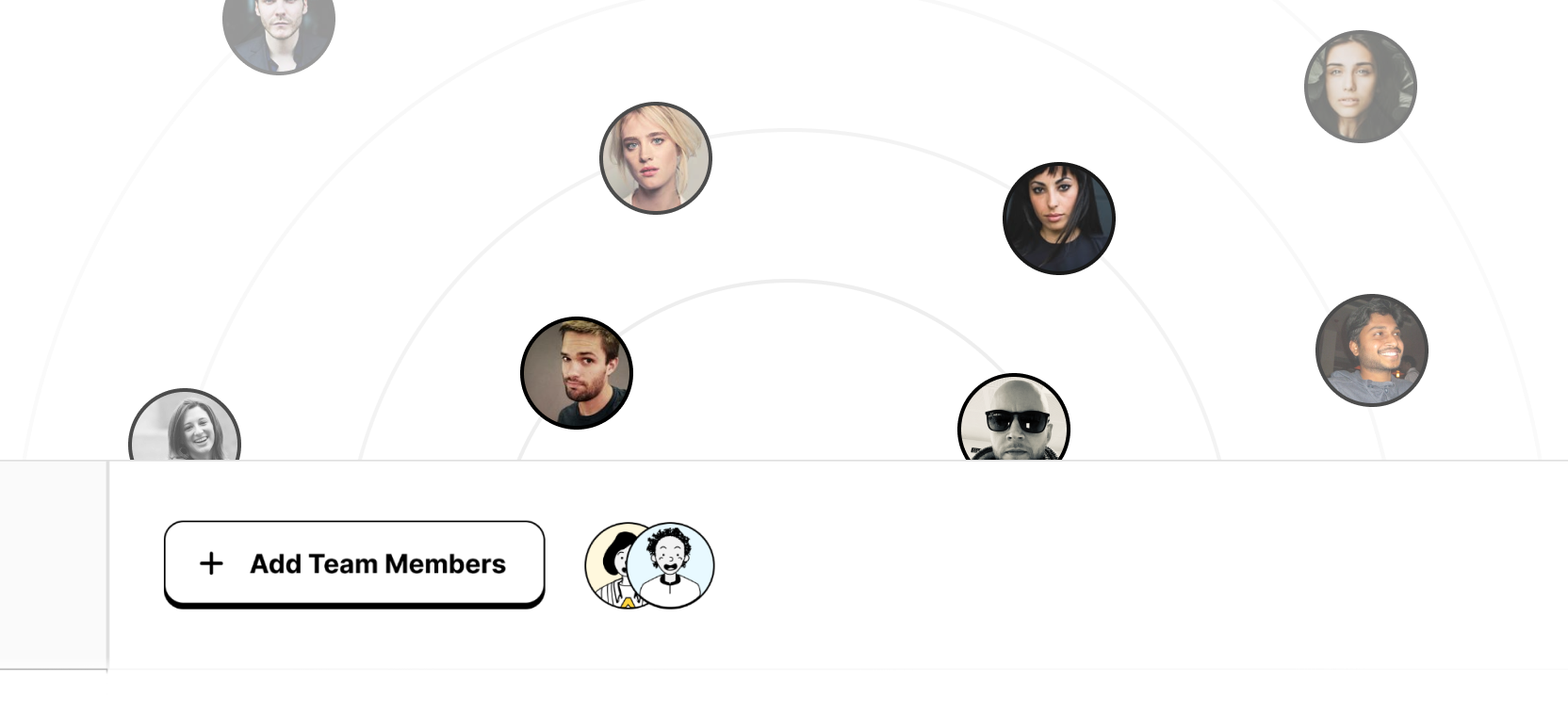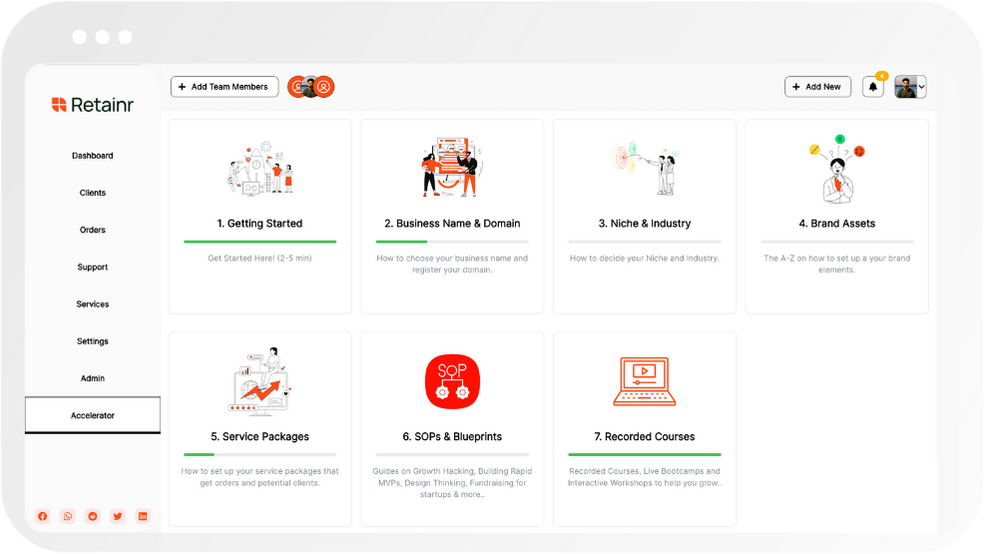
Improving Communication Efficiency: Practical Tips and Techniques
Build with Retainr
Sell your products and services, manage clients, orders, payments, automate your client onboarding and management with your own branded web application.
Get Started1. What are some proven strategies to improve communication efficiency?
Proven Strategies to Improve Communication Efficiency
Improving communication efficiency requires developing clear and understandable ways to relay information. The fewer barriers between the speaker's intention and the listener's understanding, the better. Some proven strategies to improve communication efficiency include:
- Providing clear instructions: Be precise and direct with your messages to reduce miscommunication.
- Listening actively: Ensure you show interest in what is being said, ask clarifying questions and give feedback.
- Non-verbal communication: Use positive body language to evoke openness and understanding.
- Consistency: Send consistent messages that align with your actions to avoid creating confusion.
Techniques for Improving Communication
In addition to these strategies, implementing certain techniques can also help to further streamline the communication process. Here are some commonly utilized techniques:
- Use simple language: Avoid using jargon or too many technical terms.
- Repeat important points: Repeating your key points can help with better retention of information.
- Encourage feedback: Inviting others to share their thoughts and opinions can help in clarifying any misunderstandings.
Efficient Communication in Business
In the business setting, efficient communication plays a critical role in overall operations and productivity. Aside from preparing and giving clear instructions, encouraging feedback, and practicing active listening, choosing the right communication channels also matters. The table below demonstrates the effectiveness of various communication channels.
| Communication Channel | Effectiveness |
|---|---|
| Potentially effective for detailed explanations, but may be inefficient for urgent matters. | |
| Phone Call | Can be efficient for immediate feedback, but milder in effectiveness for complex discussions. |
| In-person meeting | Often the most effective option, as it allows for in-depth discussions and real-time feedback. |
2. How can I increase communication efficiency within a team?
Increasing Communication Efficiency in Teams
Effective communication within a team can boost overall productivity and create a healthy working atmosphere. However, achieving it requires implementing strategies that encourage open and efficient dialogue. Here are several ways to accomplish this task:
- Clearly Define Roles and Responsibilities: Each team member should understand their specific roles and what is expected of them. This clarity helps to reduce confusion and thereby increases communication efficiency.
- Regular Meetings: Regular team meetings offer an ideal platform for team members to communicate their challenges, suggestions, as well as progress reports. This helps in keeping everyone in the loop.
- Promotion of Open Dialogue: Team members should feel comfortable expressing their views, opinions, or grievances in a respectful and accepting environment. This will enhance communication and the overall team relationship.
Avoiding Communication Breakdown
In addition to implementing communication techniques, it's essential to avoid habits that could lead to communication breakdown within a team. Consider the following action points:
- Avoiding Information Overload: Offering too much information at once can lead to confusion. It's crucial to keep the message as concise as possible without omitting any critical details.
- Respect for individual Communication Styles: Everyone has their way of communicating; therefore, understanding and respecting these different communication styles can help improve team dialogue.
- Active Listening: This involves paying full attention to the speaker, showing empathy, and providing constructive feedback. It makes the speaker feel valued, and in turn, promotes efficient communication.
Communication Tools and Techniques
Selecting the best communication tools and techniques can immensely boost team interaction. Here is a table listing some of the most efficient ones:
| Tools | Techniques |
|---|---|
| Clear and concise messaging | |
| Project management software(e.g., Trello, Asana) | Regular task updates |
| Video conferencing tools(e.g., Zoom, Google Meet) | Weekly or bi-weekly team meetings |
3. What practical tips can I implement to boost my personal communication skills?
Improving Verbal Communication Skills
One of the fundamental aspects of effective communication lies in refining verbal skills. Here are some practical tips you can implement:
- Speak Clearly: Make sure your voice is clear and your words are well-pronounced to avoid any misunderstanding.
- Use Simple Language: Try not to overload your dialogue with complex terminology. Keep it simple and intelligible.
- Active Listening: Effective communication is not only about speaking but also listening. Show your interest in the conversation, respond appropriately and ask clarifying questions if needed.
Enhancing Non-Verbal Communication
Besides the spoken word, non-verbal cues play an essential role in conveying messages. The following tips can help leverage these silent signals:
| Tips | Practices |
|---|---|
| Eye Contact | Maintain appropriate eye contact to show your engagement in the conversation. However, avoid staring as it may make the other person uncomfortable. |
| Body Language | Your stance, gestures, and expressions provide cues about your thoughts and feelings. Ensure they align with your words. |
| Proximity | Respect personal space boundaries to avoid causing discomfort during the conversation. |
Improving Written Communication
Proficient written communication skills are vital, especially in professional settings. Here are some suggestions:
- Clarity is Key: Keep your sentences concise and your message clear. Avoid long, winding sentences and ensure your main points stand out.
- Edit and Proofread: Always proofread your text for any grammatical errors, omissions, or unclear phrases before sending it.
- Use Structure: Organise your text using paragraphs and headings to make it easy to read and understand.
4. What are some effective techniques to improve communication in large organizations?
Effective Techniques for Improving Communication
Communication in large organizations can be complicated and daunting due to the hierarchy levels, cross-functional team dynamics, and geographical dispersion. However, there are proven techniques that can improve the flow and quality of communication even within complex organizational structures. These techniques can be broadly classified into Behavioral Adjustments, Technological Solutions, and Organizational Realignments, as shown in the table below:
| Technique Category | Examples |
|---|---|
| Behavioral Adjustments | Promoting active listening, encouraging feedback, and fostering a culture of open communication |
| Technological Solutions | Adoption of suitable communication tools such as Slack, Microsoft Teams, or Basecamp |
| Organizational Realignments | Establishing a central information hub, clear communication hierarchy, and standardizing communication protocols |
Behavioral Adjustments for Improved Communication
Behavioral adjustments are foundational changes that must occur at both the individual and team level in an organization. These include:
- Fostering a culture where questions, perspectives, and constructive disagreements are welcomed.
- Promoting active listening - where team members make a conscious effort to listen, understand, and then respond to communication.
- Encouraging feedback - both positive and constructive criticism to continuously fine-tune the communication process.
Technological Solutions and Organizational Realignments
On top of behavioral changes, organizations can leverage technology and organizational realignments to streamline communication. More specifically:
- Select and implement a suite of communication tools that fulfill the organization's needs. This could be a combination of email, instant messaging, video conferencing, and project management tools.
- Create a central information hub - a single source of truth where all important documents and information are stored and easily accessible to all members of the organization.
- Realign the organizational structure to reduce unnecessary hierarchy or bureaucratic red tape. Restructuring teams into smaller cross-functional units can improve communication efficiency.
5. How can technology be used to enhance communication efficiency?
Using Technology to Enhance Communication Efficiency
Efficient communication is vital for any organization. Technology can be utilized to improve communication in numerous ways.
- Email: Email is an efficient method of sharing information that reduces time delays.
- Collaborative Tools: Platforms like Google Docs and Microsoft Teams facilitate real-time collaboration, effectively bridging the communication gap.
- Video Conferencing: Tools like Zoom and Skype enable face-to-face conversation irrespective of geographical barriers, thus improving communication effectiveness.
- Social Networking: Social media platforms like LinkedIn, Twitter promote effective business communication.
- Project Management Tools: Trello, Asana, etc. help in assigning tasks, monitoring progress, and facilitating communication among team members.
Effective Use of Communication Technology
To benefit from communication technology, it is critical to use them effectively. Here are a few tips for effective utilization:
- Use instant messaging for quick discussions, but avoid using it for complex topics that may require detailed replies.
- Strategically schedule video conferences to ensure all participants can attend.
- Use shared calendars to organize and track team activities.
- Ensure all communication tools are secure to avoid data breaches.
Impact of Communication Technology on Efficiency
Incorporating technological tools for communication can have a significant impact on efficiency. Here's a comparison of productivity before and after using communication technology.
| Before Technology | After Technology | |
|---|---|---|
| Response Time | Delayed | Instant |
| Collaboration | Limited | Inclusive and Real-time |
| Accessibility | Physical Presence Required | Remote Access Possible |
| Data Security | At Risk | Well protected |
6. Are there any recommended training programs for improving communication efficiency?
Training Programs for Improving Communication Efficiency
Several training programs are available that can improve your communication efficiency significantly. These programs provide you with tools and techniques to communicate your ideas and thoughts more articulately and effectively. Here are some recommended programs:
- 'Effective Communication Skills' by Dale Carnegie: This training program is excellent for both professionals as well as individuals looking to improve their communication skills. Dale Carnegie’s training module helps you develop a clear and concise communication style, which can be beneficial in both personal and professional settings.
- 'Communication Strategies for Leaders' by American Management Association: This training program specifically aims at upgrading the communication abilities of people in leadership positions. It focuses on effective communication strategies that align with the goals of an organization.
- 'Communication Skills Training' by Udemy: Available on the online learning platform Udemy, this course offers a comprehensive module on communication skills applicable across diverse situations. This training program also allows you to learn at your own pace.
Main Objectives of these Programs
The primary objectives of these training programs vary based on the specific course content and target audience. However, some common aims are:
| Training Programs | Objectives |
|---|---|
| 'Effective Communication Skills' | To equip participants with the ability to articulate ideas distinctly, giving clear directions and making powerful presentations. |
| 'Communication Strategies for Leaders' | To develop persuasive communication to influence others, encourage collective idea sharing, manage conflicts, and build stronger teams within an organization. |
| 'Communication Skills Training' | To teach participants how to communicate effectively in diverse situations, enhance listening skills, and assert themselves constructively. |
Conclusion
Improving communication efficiency goes a long way in enhancing not only personal relationships but also fostering a healthier work environment. These training programs provide participants with a comprehensive approach to enhancing their communication skills, ensuring that they can successfully convey their thoughts and ideas in any given situation.
7. What is the role of active listening in achieving efficient communication?
Role of Active Listening in Efficient Communication
Active listening plays a fundamental function in enabling efficient communication. Whenever two or more individuals engage in a conversation, miscommunication or misunderstanding can often occur due to several reasons. However, the application of active listening can help eliminate or significantly reduce these barriers to efficient communication. Active listening refers to the practice of fully concentrating, understanding, and responding to a speaker.
Benefits of Active Listening
- Prevents Misunderstandings: By carefully paying attention to what is being said and reflecting on it, the listener can prevent misunderstandings that may crop up due to not comprehending the message correctly.
- Promotes Clarity: Active listening enables the listener to ask clarifying questions to ensure a clear understanding of the speaker's point of view.
- Enhances Relationships: When people feel heard and understood, it fosters a sense of trust and respect, thereby improving interpersonal relationships.
- Encourages Mutual Understanding: It aids in the development of a shared understanding among the communicating entities, leading to an efficient exchange of ideas and information.
Strategies of Active Listening
While the benefits of active listening are substantial, it is equally important to understand and apply specific tactics to actualize it effectively. Below is a table outlining some of these strategies:
| Strategy | Description |
|---|---|
| Maintain eye contact | Maintaining eye contact with the speaker indicates your attention and interest in the conversation. |
| Nodding | This physical response shows that you are engaged and understanding the speaker's message. |
| Asking questions | Ask questions to clarify any points you may not have understood or need more information about. |
| Reflecting | Paraphrasing or summarizing the speaker's words helps confirm your understanding and demonstrates your active participation. |
| Non-interruption | Avoid interrupting the speaker. Give them the opportunity to express their thoughts completely before responding. |
8. How can clear and concise messaging improve communication efficiency?
The Importance of Clear and Concise Messaging
Clear and concise messaging plays a vital in communication efficiency. First, it guarantees that the main idea is not buried under unnecessary information. Second, it minimizes the potential for misunderstanding because the message is straightforward and to the point. Lastly, it saves time as the receiver can grasp the message quickly.
Principles of Clear and Concise Messages
- Clarity: Ensure there is clarity in your message. The receiver should not have to decipher what you are trying to communicate. Make sure your points come across clearly without any ambiguity.
- Brevity: Keep your messaging concise. Avoid long-winded explanations and interruptions. Instead, go straight to the point.
- Structure: Structure your message in a manner that the receiver will understand. Provide context where necessary and arrange your points logically.
- Simplicity: Use simple and straightforward language. Avoid jargon and complex vocabulary as much as possible.
Impact of Clear and Concise Messages on Communication Efficiency
| Improved Aspects | Effects |
|---|---|
| Time Efficiency | Clear and concise messages save time as they eliminate the need for long explanations. |
| Message Comprehension | Recipients understand the message quickly and accurately, reducing the chance for errors and misunderstandings. |
| Increased Engagement | Being clear and concise make your message more engaging, increasing the likelihood of a positive response. |
9. How does avoiding jargon contribute to enhancing communication efficiency?
Understanding the Role of Jargon in Communication
Jargon is the specialized or technical language used by individuals within a particular profession or group. It often serves as a form of shorthand, simplifying and speeding up communication among insiders. However, when used in broader communication settings, jargon can lead to confusion, misunderstanding, and inefficient communication. It can alienate or intimidate those who are not familiar with the terms and diminish the clarity and effectiveness of the message.
Benefits of Avoiding Jargon for Communication Efficiency
- Enhances understanding: Avoiding jargon makes your message clear and easy to understand for everyone, not just people within a specific field.
- Builds inclusivity: It promotes an inclusive communication environment where everyone can participate and contribute, rather than feeling left out or confused.
- Boosts engagement: When people understand what is being said, they are more likely to engage in the discussion, fostering a more effective and dynamic communication process.
Practical Tips for Avoiding Jargon
Know Your Audience: The first step in avoiding jargon is to understand your audience. If they are not experts in your field, avoid using technical terms or explain them well if necessary.
| Tip | Description |
|---|---|
| Use Plain Language | Attempt to replace complex terms and phrases with simple, everyday language wherever possible. |
| Provide Examples | When discussing complex topics, examples can help illustrate your point and make it easier for the audience to understand. |
| Use Analogies | Analogies can serve as a powerful tool for explaining complex ideas in a simple and relatable way. |
10. Can you provide examples of poor communication and how it can be turned into efficient communication?
Examples of Poor Communication
Poor communication can occur in numerous ways and lead to misunderstandings, frustration, and declining productivity. Here are three common examples:
- Unclear Instructions: When a supervisor provides insufficient information about tasks, employees can waste time trying to decipher what's required.
- Ambiguous Feedback: Vague criticism doesn't provide the employee with a clear direction for improvement.
- Information Overload: Too much information can overwhelm recipients and important details can get lost.
Transforming Poor into Efficient Communication
Improving these common communication pitfalls can enhance understanding, decrease stress, and boost productivity. The following methods can turn the previous examples into efficient communication:
- Specific Instructions: Provide precise, direct instructions with relevant details and expectations to reduce ambiguity.
- Constructive Feedback: Offer specific, positive suggestions for improvement alongside constructive criticism.
- Chunking Information: Organize and present information in small, digestible chunks to avoid overwhelming the recipient.
Comparison Table of Poor and Efficient Communication
| Poor Communication | Efficient Communication | |
|---|---|---|
| Instructions | Unclear and insufficient information. | Specific, clear details with expectations. |
| Feedback | Vague and non-constructive criticism. | Specific, constructive, and positive direction. |
| Information Delivery | Overwhelming amount of information. | Organized, digestible information chunks. |
Conclusion
Boosting Communication Efficiency: Valuable Tactics and Techniques
Effective communication is vital in any workplace. Efficient communication lubricates the cogs of business operations, ensuring everything runs smoothly. This article provides practical tips and methods for enhancing workplace communication, including techniques like utilizing the right communication tools, setting clear expectations, and active listening.Utilize the Right Communication Tools
Emerging technologies offer an array of communication tools that facilitate swift, efficient communication. Every enterprise should carefully select tools that will boost communication efficiency within their operations. One standout software that significantly aids in client management, order and payment handling, is Retainr.io. Retainr.io is a potent tool customized to propel your business forward: a whitelabel software solution that allows you to sell, manage clients, orders and payments under your own branded app. By integrating Retainr.io into your operations, you allow your business to operate as a self-sufficient, modern e-commerce establishment.Setting clear expectations
To achieve streamlined communication, setting clear, concise expectations is key. It reduces misunderstandings and ensures all the team members are on the same page.Active Listening
An often overlooked communication technique, active listening allows for better understanding and responses. Active listeners are able to comprehend, retain, and respond effectively to information, making this a vital technique in enhancing communication efficiency.To wrap it up, by using reliable, efficient tools like Retainr.io, setting clear expectations and practicing active listening, your business will boost its communication efficiency, consequently enhancing overall productivity.Boost Your Agency Growth
with Retainr Accelerator
Uncover secrets, strategies, and exclusive blueprints to take your agency's growth to the next level — from marketing insights to effective presentations and leveraging technology.

SOPs, Cheatsheets & Blueprints
Leverage 50+ SOPs (valued over $10K) offering practical guides, scripts, tools, hacks, templates, and cheat sheets to fast-track your startup's growth.
Connect with fellow entrepreneurs, share experiences, and get expert insights within our exclusive Facebook community.
.jpg)

Join a thriving community of growth hackers. Network, collaborate, and learn from like-minded entrepreneurs on a lifelong journey to success.

Gain expertise with recorded Courses, Live Bootcamps and interactive Workshops on topics like growth hacking, copywriting, no-code funnel building, performance marketing and more, taught by seasoned coaches & industry experts.

.jpg)

.jpeg)


